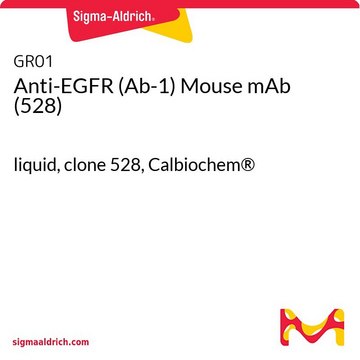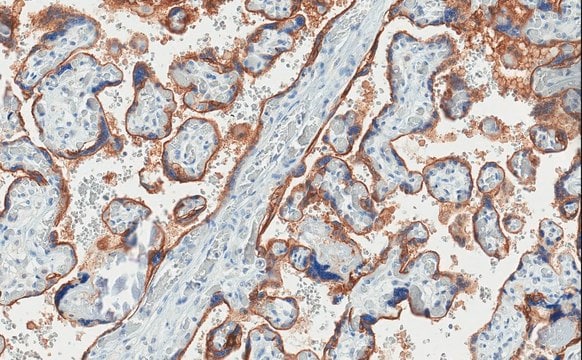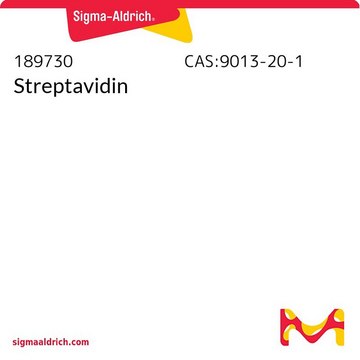GR01L
Anti-EGFR (Ab-1) Mouse mAb (528)
lyophilized, clone 528, Calbiochem®
Synonim(y):
Anti-Epidermal Growth Factor Receptor
About This Item
Polecane produkty
pochodzenie biologiczne
mouse
Poziom jakości
forma przeciwciała
purified antibody
rodzaj przeciwciała
primary antibodies
klon
528, monoclonal
Postać
lyophilized
nie zawiera
preservative
reaktywność gatunkowa
human
spodziewany brak reakcji z
rat, mouse
producent / nazwa handlowa
Calbiochem®
warunki przechowywania
OK to freeze
izotyp
IgG2a
Warunki transportu
ambient
temp. przechowywania
2-8°C
docelowa modyfikacja potranslacyjna
unmodified
informacje o genach
human ... EGFR(1956)
mouse ... Egfr(13649)
rat ... Egf(25313)
Opis ogólny
Immunogen
Zastosowanie
Frozen Sections (2.5 µg/ml)
Immunofluorescence (5 µg/ml)
Immunoprecipitation (1 µg/sample)
Neutralization Studies (see comments and application references)
Paraffin Sections (see application references)
Ostrzeżenie
Postać fizyczna
Rekonstytucja
Komentarz do analizy
A-431 cells or skin tissue
Inne uwagi
Masui, H., et al. 1984. Cancer Res.44, 1002.
Reynolds, F. H., Jr., et al. 1981. Nature 292, 259.
Ushiro, H. and Cohen, S. 1980. J. Biol. Chem.255, 8363.
Informacje prawne
Nie możesz znaleźć właściwego produktu?
Wypróbuj nasz Narzędzie selektora produktów.
Kod klasy składowania
11 - Combustible Solids
Klasa zagrożenia wodnego (WGK)
WGK 1
Certyfikaty analizy (CoA)
Poszukaj Certyfikaty analizy (CoA), wpisując numer partii/serii produktów. Numery serii i partii można znaleźć na etykiecie produktu po słowach „seria” lub „partia”.
Masz już ten produkt?
Dokumenty związane z niedawno zakupionymi produktami zostały zamieszczone w Bibliotece dokumentów.
Nasz zespół naukowców ma doświadczenie we wszystkich obszarach badań, w tym w naukach przyrodniczych, materiałoznawstwie, syntezie chemicznej, chromatografii, analityce i wielu innych dziedzinach.
Skontaktuj się z zespołem ds. pomocy technicznej








